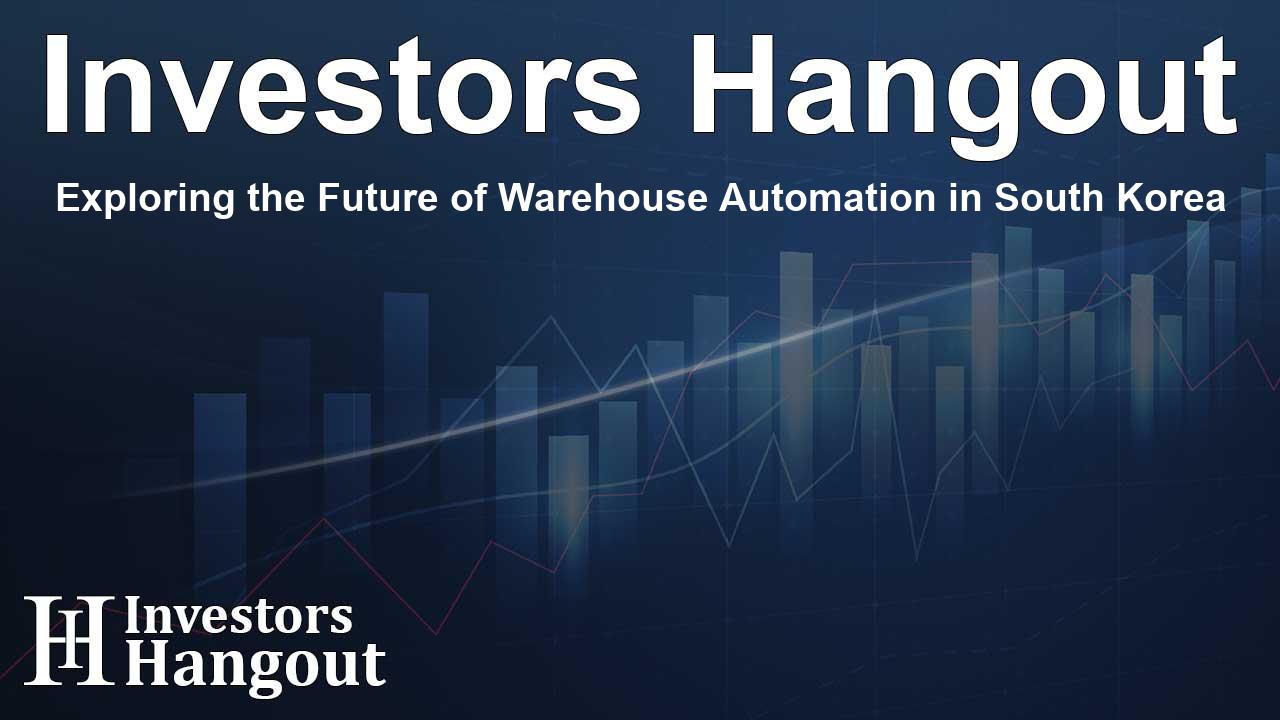Exploring the Future of Warehouse Automation in South Korea

The Growing Warehouse Automation Market in South Korea
The warehouse automation market in South Korea is witnessing significant growth driven by advancements in technology and an increasing demand for efficient logistics solutions. According to research projections, the market is anticipated to expand from around USD 4.1 billion in 2024 to approximately USD 14.0 billion by 2033, achieving a remarkable compound annual growth rate (CAGR) of 14.5%.
Factors Fueling Market Growth
Several forces are propelling the surge in warehouse automation across the nation. Industries such as retail, e-commerce, and manufacturing are rapidly embracing automation technologies to enhance operational efficiency and reduce dependency on human labor. As South Korea positions itself as a regional logistics hub, the push for automation in warehouses has become increasingly urgent.
Technological Innovations Shaping the Market
Key technologies contributing to this wave of innovation include automated storage and retrieval systems, robotics, and advanced warehouse management systems (WMS). These technologies play a vital role in streamlining operations, enhancing productivity, and overcoming labor shortages faced by many companies.
Prominent Players in the Space
Leading firms such as Hyundai Movex, SFA Corporation, and Locus Robotics Korea are at the forefront of offering innovative automation solutions. These companies are continuously striving to introduce new technologies that can shape the future of warehousing. Global players, including Hik Robotics and AutoStore System Ltd, also significantly influence market dynamics.
Market Insights and Trends
As of 2024, the market value for warehouse automation in South Korea is projected at USD 4.1 billion, with expectations of reaching USD 14 billion by 2033. The hardware segment is poised to dominate the market, making up about 43.7% of total revenue. Furthermore, the integration of artificial intelligence (AI) and robotics is revolutionizing warehousing operations. Collaborative robots, also known as cobots, significantly enhance efficiency in picking and packing tasks.
Rise of E-commerce and Automated Fulfillment Centers
The booming e-commerce sector is reshaping the warehouse landscape, leading to the establishment of fully automated fulfillment centers. This shift is driven by the need for rapid order processing and enhanced accuracy in inventory management. Technologies such as conveyor systems and mobile robotics are key to sustaining this growth, particularly in online grocery and retail.
Understanding the Competitive Landscape
The competitive landscape in the South Korean warehouse automation market includes both large players and innovative startups. As demand for automation solutions increases, firms are forming strategic partnerships and exploring mergers to enhance their service offerings. This trend is expected to drive continuous innovation and competition within the sector.
Key Market Segments
- Components: The industry divides into hardware, software, and services, with hardware expected to lead in market share.
- Automation Levels: Various tiers exist, including basic and advanced automation systems.
- Applications: Key applications include retail, healthcare, automotive, and electronics sectors.
Growth Drivers and Challenges
The primary driver behind this surge in warehouse automation is the shortage of skilled labor in South Korea, compounded by an aging workforce. The South Korean government supports automation efforts by offering favorable policies, reforms, and training programs that encourage investment in technology. However, the high initial costs associated with these technologies can deter adoption, particularly among small and medium-sized enterprises.
Future Directions and Opportunities
Looking ahead, online grocery shopping and food delivery services are expected to create new opportunities within the warehouse automation landscape. Investments in temperature-sensitive robotics and AI-driven systems will become crucial for cold storage logistics. Furthermore, AI and machine learning applications are paving the way for advanced inventory management solutions and smarter operational decisions.
Frequently Asked Questions
What is the expected growth of the South Korean warehouse automation market?
The market is projected to grow from USD 4.1 billion in 2024 to USD 14.0 billion by 2033, with a CAGR of 14.5%.
What technologies are driving warehouse automation?
Technologies such as automated storage systems, robotics, and AI-driven warehouse management systems are key drivers.
Who are the key players in South Korea's warehouse automation sector?
Prominent players include Hyundai Movex, SFA Corporation, Locus Robotics Korea, and global firms like Hik Robotics.
What are the main challenges facing warehouse automation adoption?
The high initial costs of automation technologies and difficulties in integrating new systems with existing operations pose significant challenges.
How is e-commerce affecting warehouse automation?
The growth of e-commerce is leading to the establishment of automated fulfillment centers to enhance efficiency and speed in order processing.
About Investors Hangout
Investors Hangout is a leading online stock forum for financial discussion and learning, offering a wide range of free tools and resources. It draws in traders of all levels, who exchange market knowledge, investigate trading tactics, and keep an eye on industry developments in real time. Featuring financial articles, stock message boards, quotes, charts, company profiles, and live news updates. Through cooperative learning and a wealth of informational resources, it helps users from novices creating their first portfolios to experts honing their techniques. Join Investors Hangout today: https://investorshangout.com/
Disclaimer: The content of this article is solely for general informational purposes only; it does not represent legal, financial, or investment advice. Investors Hangout does not offer financial advice; the author is not a licensed financial advisor. Consult a qualified advisor before making any financial or investment decisions based on this article. The author's interpretation of publicly available data shapes the opinions presented here; as a result, they should not be taken as advice to purchase, sell, or hold any securities mentioned or any other investments. The author does not guarantee the accuracy, completeness, or timeliness of any material, providing it "as is." Information and market conditions may change; past performance is not indicative of future outcomes. If any of the material offered here is inaccurate, please contact us for corrections.